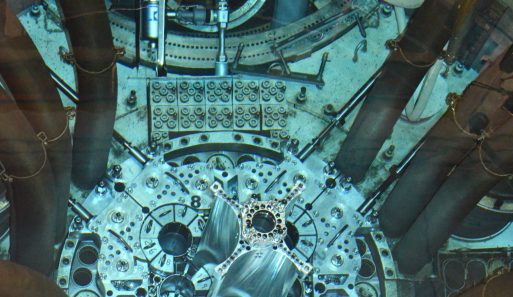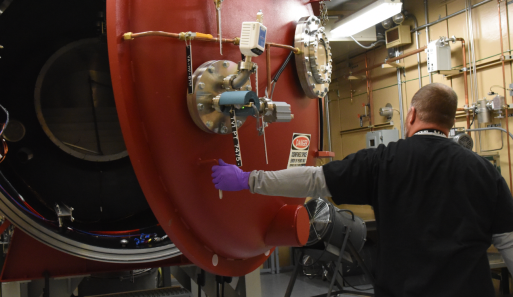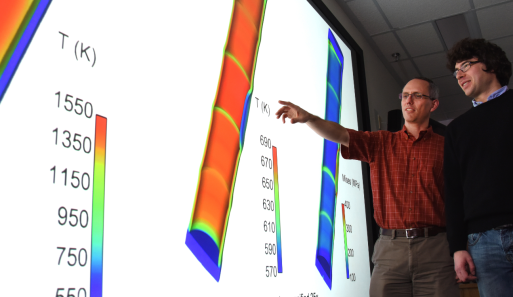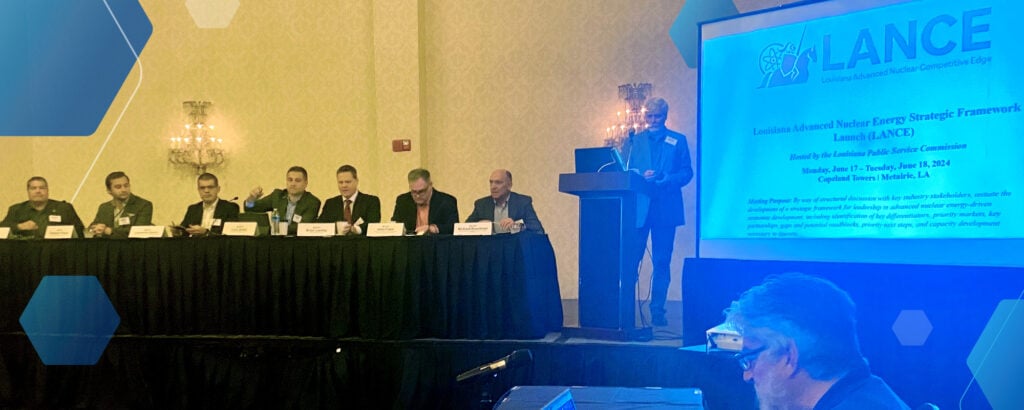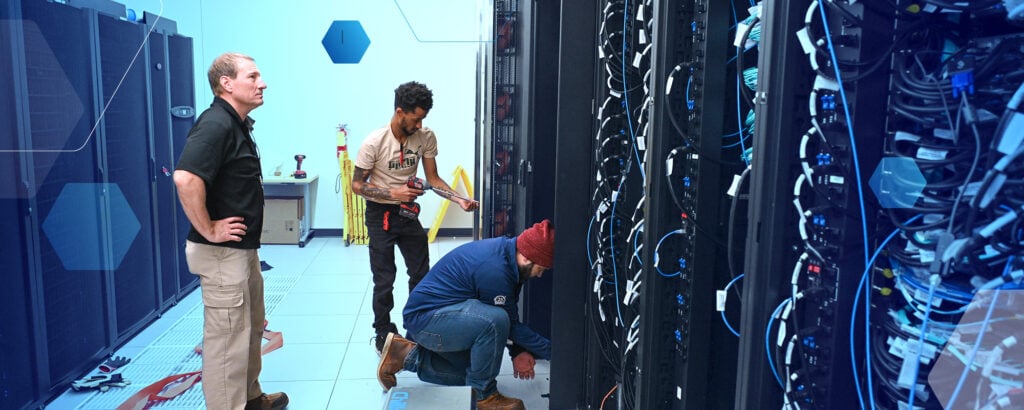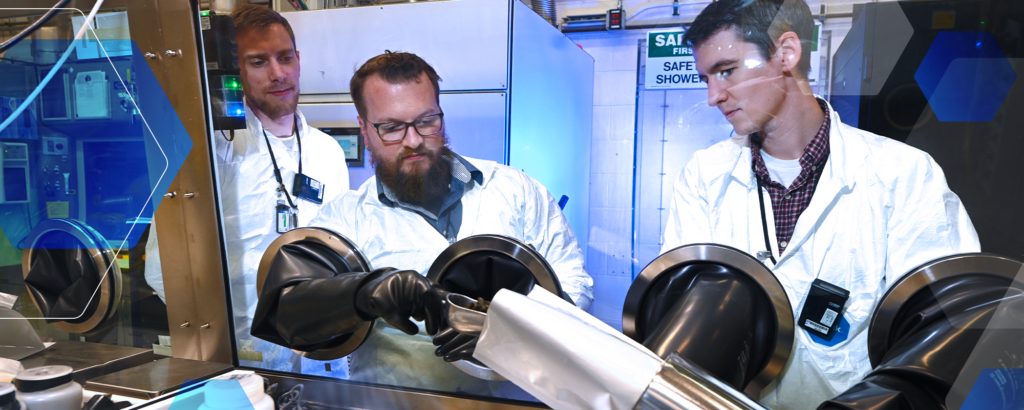As the United States moves steadily toward a carbon-free energy future, nuclear power will be an essential part of the journey. INL’s cutting-edge research is making nuclear energy more affordable, versatile and sustainable.
We’re working to give Americans effective tools to fight climate change while keeping our citizens safe.
INL is leading the nation’s research in advanced nuclear energy technology. Our scientists and engineers study reactors that can replace fossil fuels with carbon-free energy, materials that lower carbon emissions for every energy source, and applications that help us explore worlds.
Research Highlights
Advanced Test Reactor Overhaul
Advanced Nuclear
INL in the News | Nuclear Energy
Louisiana leaders are working with Idaho National Laboratory’s (INL) Frontiers Initiative to help the state...
If you’ve ever driven to a remote area, you may have noticed that the drive...
Among the impressive nuclear energy scientists at Idaho National Laboratory, Bill Phillips stands out as...
Frequently Asked Questions
Nuclear energy is safe. Statistics show that nuclear energy is one of the safest forms of energy production. In addition, INL and other organizations are working on advanced nuclear reactor technologies that have passive safety features. That means they prevent accidents using the natural laws of physics without the need for electronics or human intervention. Considering the massive potential for human harm that comes from climate change, carbon-free nuclear options present a safer alternative to many traditional energy sources and complement the variable production of renewables.
Nuclear is a clean source of energy that has very low emissions and waste generation. While there are associated carbon emissions with construction and uranium mining, these are relatively small compared with the large amounts of energy produced. Nuclear energy has similar carbon emissions per energy unit generated as wind and solar. The amount of used fuel generated from nuclear plants is relatively small and is carefully managed and stored for future disposal or reuse.
A nuclear reactor converts the heat created by nuclear fission into electricity. Fission occurs when a neutron splits a uranium atom into two smaller atoms, releasing heat and more neutrons that split more atoms, continuing in a controlled chain reaction. The heat released by fission is used to create clean steam that spins a turbine to generate electricity. This is similar to how other types of energy plants use heat to generate electricity.
The nuclear energy industry is pursuing a wide range of new systems that will be demonstrated within the next decade. These reactors use materials and technologies that allow for the reactors to be smaller and more flexible and operate at higher temperatures. These higher temperatures result in more efficient electricity generation and heat for industrial processes, along with reduced costs.
The U.S. Department of Energy’s Advanced Reactor Demonstration Program is offering cost-shared partnerships with industry to support the development and demonstration of advanced reactors.
Nuclear energy can work in harmony with other energy sources, including renewables, to offer a sustainable model for clean energy production. Nuclear power offers a reliable, carbon-free energy option with a small footprint compared to alternative renewable options. It can provide primary or emergency power generation to fill production gaps left by solar or wind energy generation. Nuclear energy is a tool that makes global carbon reduction feasible today as we evolve to better harness a larger portfolio of energy producing technologies.
A user facility is a federally designated facility that can be used by anyone to advance science. A panel of experts evaluates proposals, selects research of value and assigns time in the facility. If the research findings are made public, the facility is free to use.
INL runs three user facilities, including the Nuclear Science User Facilities, which support universities, national laboratories and industry.
A microreactor is a very small nuclear reactor that can produce up to 20 megawatts of thermal energy, which can be used to generate electricity or provide heat for processes like desalination, hydrogen production or other industrial processes. Microreactors are designed to be easily transported, installed and removed to facilitate widespread use, including at remote locations.
Test reactors are scientific instruments used to research and develop new materials. Test reactors are high-powered versions of research reactors, operated at DOE laboratories, and they are essential for ensuring the safe performance of advanced fuels and materials that will be used in commercial nuclear reactors, and in our nuclear Navy fleet. Scientists use test reactors to subject specimens to high levels of neutrons to safely determine how materials will stand up to long-term radiation exposure. INL maintains the world’s most powerful and flexible test reactors, including the Advanced Test Reactor and the Transient Reactor Test Facility. A new Versatile Test Reactor is under development to expand the nation’s nuclear material testing capabilities.
Since reactors produce large quantities of heat, they can provide energy for other purposes like hydrogen production, water purification and delivering heat to help decarbonize certain industries.
Nuclear fission also plays a role in space exploration. INL has provided five different radioisotope power sources to NASA spacecraft, including the power source for NASA’s Mars Perseverance rover. And INL is involved in the development of space fission power systems that will support future missions.
Small modular reactors are compact reactor units that can be assembled as single power sources or combined in a series of reactor modules at one nuclear power plant. These reactors allow for easily scalable power production and come with distinct safeguards for security and nonproliferation goals.
Not finding what you are looking for? Please send your question to [email protected].

